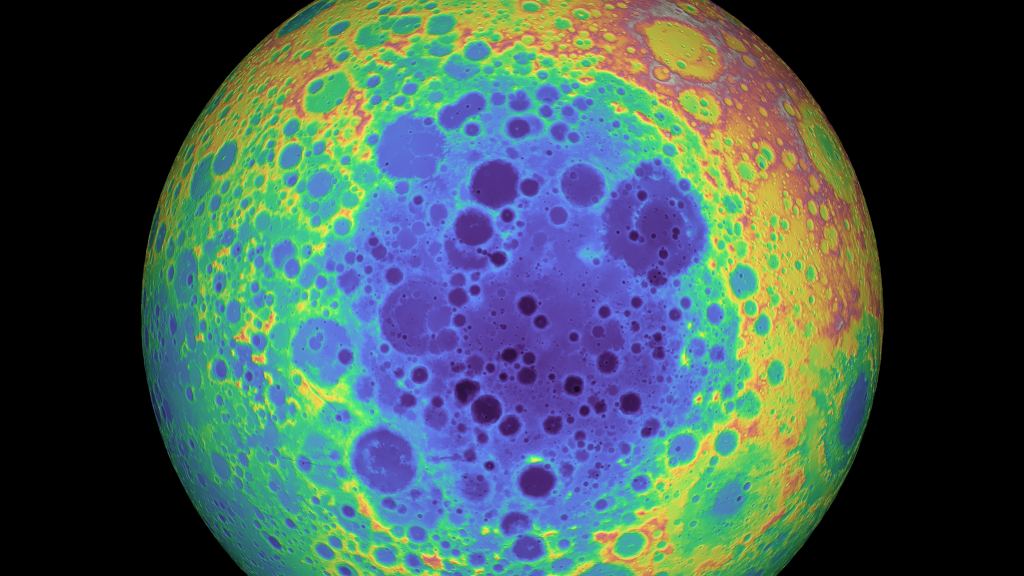When astronauts return to the Moon in the next few years (as part of Project Artemis) they will be scouting locations and resources around the South Pole-Aitken Basin that will eventually help them to stay there. In this cratered, permanently-shadowed region, water ice has been found in abundance, which could one-day be harvested for drinking water, irrigation, and the creation of oxygen gas and rocket fuels.
A critical aspect to planning for all or this is to consider how future missions may affect the local environment. Based on new research from a team of planetary scientists and engineers, a major risk comes in the form of contamination by lunar landers. In short, exhaust from these vehicles could spread around the Moon and contaminate the very ices the astronauts hope to study.
The study that describes their findings, which recently appeared in the Journal of Geophysical Research: Planets. The team was led by Parvathy Prem and Dana Hurley, two planetary scientists from the Johns Hopkins University Applied Physics Laboratory (JHUAPL), who were joined by aerospace and mechanical engineers David Goldstein and Philip Varghese from the University of Texas at Austin.

Relying on a series of computer simulations, the team found that water vapor emitted by a 1,200 kg (2,650 lbs) lander touching down near the South Pole-Aitken Basin would generate exhaust that would take only a few hours to disperse around the entire Moon. They further found that 30 to 40% of the vapor would persist in the atmosphere for two months, and roughly 20% of it would freeze near the poles a few months after that.
These concerns are not new. During the Apollo Era of the 1960s and 1970s, NASA researchers developed early models to predict how exhaust produced by their landers could spread through the atmosphere and contaminate the surface. However, this was not as significant an issue since NASA was set on obtaining samples of lunar rock at the time.
The same is true of the Artemis missions, but the greater objective is the ices that are preserved in the permanently shadowed craters near the lunar poles. In addition to being a potential source of water for future missions and exploration, the study of these ices could also shed light on the origins of water and other volatile compounds on the surface of the Moon. As Prem explained:
“Exhaust during the Apollo mission didn’t complicate measurements in the same ways that it might now… [The lunar poles] are some of the only places where we can find traces of the origin of water in the inner solar system.”

In other words, the ice around the Moon’s southern polar region is like a geological record of the planet. In order to read that record, scientists will need to measure the composition of the lunar ice deposits and determine the various isotopes present. This will tell them where the ice is likely to have formed in the Solar System and how it was transported to the Moon.
Frozen exhaust from robotic and crewed missions could confound those measurements, even if the missions land over 100 km (60 mi) away from the ice deposits. While the residue exhaust eventually fades away, the current plans for lunar exploration call for more frequent trips to and from the surface. This means that contamination from exhaust will happen more frequently and with much heavier landers. As Hurley explained:
“The interesting thing about Parvathy’s work is that it shows very well that the effect, while small and temporary, is global… The results of this study drive the critical need to conduct the research we want to do about the lunar atmosphere and volatile deposits while they are relatively pristine.”
However, there are some limitations to the model that will need to be addressed before astronauts start returning to the surface of the Moon. The most significant is the fact that it assumes the degree to which water interacts with the lunar surface, which is still uncertain but central to figuring out how water vapor is transported around the surface.

The model is also limited by the fact that it tracks only water vapor, which accounts for only a third or so of what most landers’ emit as exhaust. The remainder is made up of hydrogen, ammonia, carbon monoxide, and other compounds that are produced from burning liquid oxygen (LOX), liquid hydrogen, and other propellants. These may behave differently and last longer in the lunar environment, which calls for additional research.
This is something that Prem and her colleagues strongly recommend, and even advocate that it should be built into future missions. “But I would also suggest that modeling and monitoring the fate of exhaust gases should be a routine part of lunar mission development and planning,” she said. “Whether we intend to or not, we’re going to do this experiment of bringing exhaust gases with us.”
Given the pace at which NASA is moving to ensure that Artemis meets its 2024 deadline, this research will be happening soon enough. Back in January, NASA finalized 16 science and technology payloads that the lunar lander would transport to the surface. One of these missions is known as the Surface Exosphere Alterations by Landers (SEAL), which will investigate the chemical effects of landing on the lunar surface.
This research will ultimately assist in one of Artemis’ greatest scientific goals, which is to determine how water was distributed throughout the Solar System billions of years ago. It will also offer insights into how spacecraft alter planetary environments, which will help inform future missions to Mars – where scientists will be looking for evidence of past and present life.
If we hope to unlock the secrets of how and where life emerged in the Solar System, we need to abide by a the modified campsite rule: leave the place as pristine as you found it!
Further Reading: JHUAPL, Journal of Geophysical Research: Planets


I think it’s an acceptable risk.